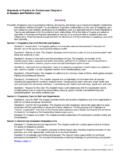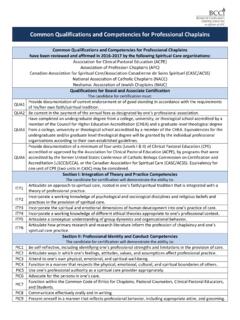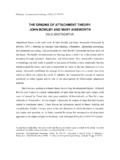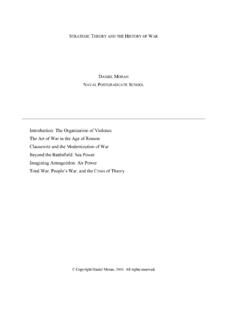Transcription of Standards of Practice for Professional Chaplains
1 Standards of Practice for Professional Chaplains 10/22/15. Standards of Practice for Professional Chaplains Preamble: Chaplaincy care is grounded in initiating, developing, deepening and closing a spiritual and empathic relationship with those receiving care. The development of a genuine relationship is at the core of chaplaincy care. Relationships underpin, even enable, all the other dimensions of chaplaincy care to occur. It is assumed that all of the Standards are addressed within the context of such relationships. 1. Section 1: Chaplaincy Care with Care Recipients Standard 1, Assessment: The chaplain gathers and evaluates relevant information regarding the care recipient's spiritual, religious, emotional and relational needs and resources.
2 Standard 2, Delivery of Care: The chaplain develops and implements a plan of care to promote the well-being of the care recipient. Standard 3, Documentation of Care: The chaplain documents in the appropriate recording structure information relevant to the care recipient's well-being. Standard 4, Teamwork and Collaboration: The chaplain collaborates, within the chaplain 's scope of Practice , with other care providers to promote the well-being of the care recipient. Standard 5, Ethical Practice : The chaplain adheres to the APC Code of Ethics and other codes of ethics as required by the chaplain 's Professional setting to guide decision-making and Professional behavior.
3 Standard 6, Confidentiality: The chaplain respects the confidentiality of information from all sources, including the care recipient, legal or organizational records, and other care providers in accordance with federal and state laws, regulations and rules. Standard 7, Respect for Diversity: The chaplain models and collaborates with other care providers in respecting and providing sensitive care regardless of diverse abilities, beliefs, cultures or identities. Section 2: Chaplaincy Care for the Organization Standard 8, Care for Employees and Affiliates: The chaplain provides effective chaplaincy care to the organization's employees and affiliates via individual and group interactions.
4 Standard 9, Care for the Organization: The chaplain provides chaplaincy care to the organization in ways consistent with the organization's values and mission statement. Standard 10, chaplain as Leader: The chaplain provides leadership in the chaplain 's Professional setting and profession. 1. Standards of Practice for Professional Chaplains 10/22/15. Section 3: Maintaining Competent Chaplaincy Care Standard 11, Continuous Quality Improvement: The chaplain seeks and creates opportunities to enhance the quality of chaplaincy care Practice as understood within the chaplain 's Professional setting. Standard 12, Research: The chaplain remains informed of relevant developments in evidenced-based and best practices in chaplaincy care through reading and reflecting on the current research and Professional Practice ; and, where practical, collaborates or provides leadership on research studies.
5 Standard 13, Knowledge and Continuing Education: The chaplain takes responsibility for continued Professional development and demonstrates a working knowledge of current theory and Practice as appropriate to the chaplain 's Professional setting. Standard 14, Technology: The chaplain appropriately uses technology to enhance delivery of care and to advance the work of the profession. Standard 15, Business Acumen: The chaplain values and utilizes business principles, practices and regulatory requirements appropriate to the chaplain 's role in the organization. HISTORY. Chaplains of diverse faith traditions have provided spiritual and religious care in a variety of contexts for centuries.
6 Those settings have included the military, schools, various health care organizations 2 and other places of work. As the profession has matured, there have been a series of documents developed to guide Chaplains in their work. An early example of such a document among health care Chaplains grew out of a 1939 address by chaplain Russell Dicks from Presbyterian Hospital in Chicago. He delivered the address at the annual meeting of American Protestant Hospital Association (APHA). He gave a lecture entitled, The Work of the chaplain in a General Hospital. This speech influenced the APHA to appoint a committee to write Standards for chaplaincy and to appoint Dicks as chair.
7 The Standards were adopted at the 1940 APHA annual meeting. 3. Over the years, these initial Standards were revised. As the chaplaincy groups matured, they established Standards for becoming certified as Chaplains . In 2004, major North American chaplaincy, counseling and education groups4 met as the Council on Collaboration, forerunner of the Spiritual Care Collaborative 5, and affirmed the foundational documents that included Common Standards for Professional Chaplaincy, which are certification competencies, and a Common Code of Ethics for Chaplains , Pastoral Counselors, Pastoral Educators and Students. 6. In 2008, the Association of Professional Chaplains ' (APC) Commission on Quality in Pastoral Services brought together leaders in health care chaplaincy to work toward consensus about Standards .
8 The first work group focused on minimal but essential Standards of Practice for board certified Chaplains 7 in acute care hospitals. Standards of Practice are authoritative 2. Standards of Practice for Professional Chaplains 10/22/15. statements that describe broad responsibilities for which practitioners are accountable, reflect the values and priorities of the profession, and provide direction for Professional Practice and a framework for the evaluation of Practice . 8 Models in social work and nursing, as well as models in Australian and Canadian chaplaincy, informed this work and provided catalysts for identifying and briefly explicating Standards of Practice .
9 These Standards were accepted by the Association of Professional Chaplains in 2010 as Standards of Practice for Professional Chaplains in Acute Care Settings. 9. Out of recognition of the important and distinctive work Professional Chaplains do in other contexts, the APC Quality in Chaplaincy Care Committee convened subsequent work groups to create additional context-specific Standards of Practice documents. Their work produced Standards of Practice for Professional Chaplains in Long-term Care Settings in 2012 10 and Standards of Practice for Professional Chaplains in Hospice and Palliative Care in 2014. 11. Then, in fall 2014, the APC Quality in Chaplaincy Care Committee shifted its approach.
10 This grew out of the recognition that the three previous Standards of Practice documents were remarkably similar. This was judged to be evidence of common Standards of Practice for Professional Chaplains across all of the varied contexts in which they serve. Though there are certainly ways those Standards are uniquely formed by context, the committee proposed the creation of a new Standards of Practice for Professional Chaplains . A task force of Professional Chaplains from a variety of backgrounds and contexts was enlisted to draft this document. 12 The plan was for subsequent context-specific documents to supplement this description of qualities and skills common to all Professional Chaplains .













